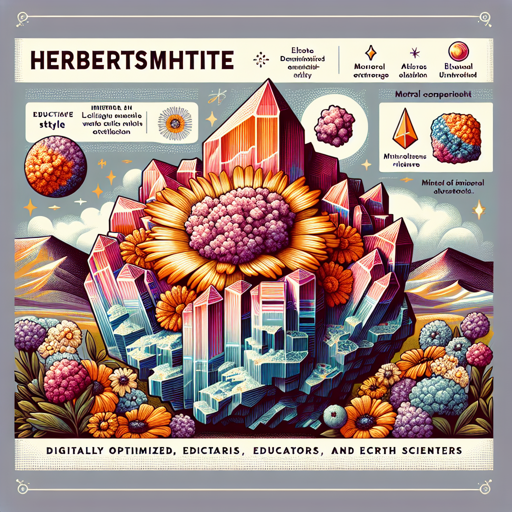Unearthing Treasures: The Art of Collecting Herbertsmithite
A comprehensive guide to the rare and intriguing mineral, Herbertsmithite, and tips for enthusiasts on collecting this unique gemstone.

Introduction
Within the exciting world of geology, mineral collecting stands as a fascinating hobby for people around the globe. As geology enthusiasts, educators, and earth science aficionados, we often find ourselves drawn to the unique allure of gemstones and minerals. Today, our exploration takes us to a mineral that is not only beautiful but also intriguing due to its rarity - the Herbertsmithite.
Named after the British mineralogist Herbert Smith, Herbertsmithite is a unique mineral with an extraordinary green color and a rare crystal structure. This post delves into the world of this captivating mineral and offers tips for those interested in collecting Herbertsmithite.
The Allure of Herbertsmithite
Herbertsmithite, known in scientific terms as a “kagome lattice mineral,” is renowned for its vibrant green color and its exciting potential in the field of quantum physics. This mineral, composed of copper, zinc, and chlorine atoms, is not only a collector’s dream but also a subject of scientific research.
Mining Locations
The primary locations for mining Herbertsmithite are in the desert regions of Chile and the highlands of Peru. These areas provide the perfect environment for Herbertsmithite to form, where it is often discovered in oxidized copper and zinc deposits.
| Country | Location | Type of Deposits |
|---|---|---|
| Chile | Atacama Desert | Oxidized Copper and Zinc |
| Peru | Andean Highlands | Oxidized Copper and Zinc |
Collecting Tips
Collecting Herbertsmithite, like any mineral, requires a certain level of knowledge and preparation. Here are a few tips to get you started:
-
Research: Understanding the mineral you are seeking is key. Learn about the characteristics of Herbertsmithite, such as its color, hardness, and typical formations.
-
Tools: A good geologist’s hammer, a hand lens, and sturdy protective gear are essential tools for any mineral collector.
-
Location: Knowing where to look is half the battle. Research the locations, geological conditions, and local regulations for collecting minerals.
-
Preservation: Once you’ve found your specimen, knowing how to preserve it properly will maintain its beauty and value.
As the famous geologist, Charles Darwin once said, “Geology opens up a huge world of which we were hitherto unconscious.” The pursuit of Herbertsmithite not only offers the thrill of the hunt but also the opportunity to appreciate the hidden wonders of our planet.
Conclusion
Herbertsmithite, with its captivating green hue and unique crystalline structure, represents a worthy quest for any mineral enthusiast. Its rarity and scientific intrigue further add to its appeal. While collecting this mineral may pose a challenge, the rewards it brings—both in beauty and knowledge—are undeniably worth it. As we continue to explore and appreciate the vast and varied world of minerals, let’s remember that each mineral has a story to tell—a story of our earth’s history, grandeur, and incredible diversity.
For more insights into the world of minerals and gemstones, visit The Mineralogical Society. This esteemed organization offers a wealth of resources for those passionate about earth science and mineral collecting.
Happy collecting and keep exploring the wonders beneath our feet!
References:
- Herbertsmithite on Wikipedia.
- Mineralogical Society